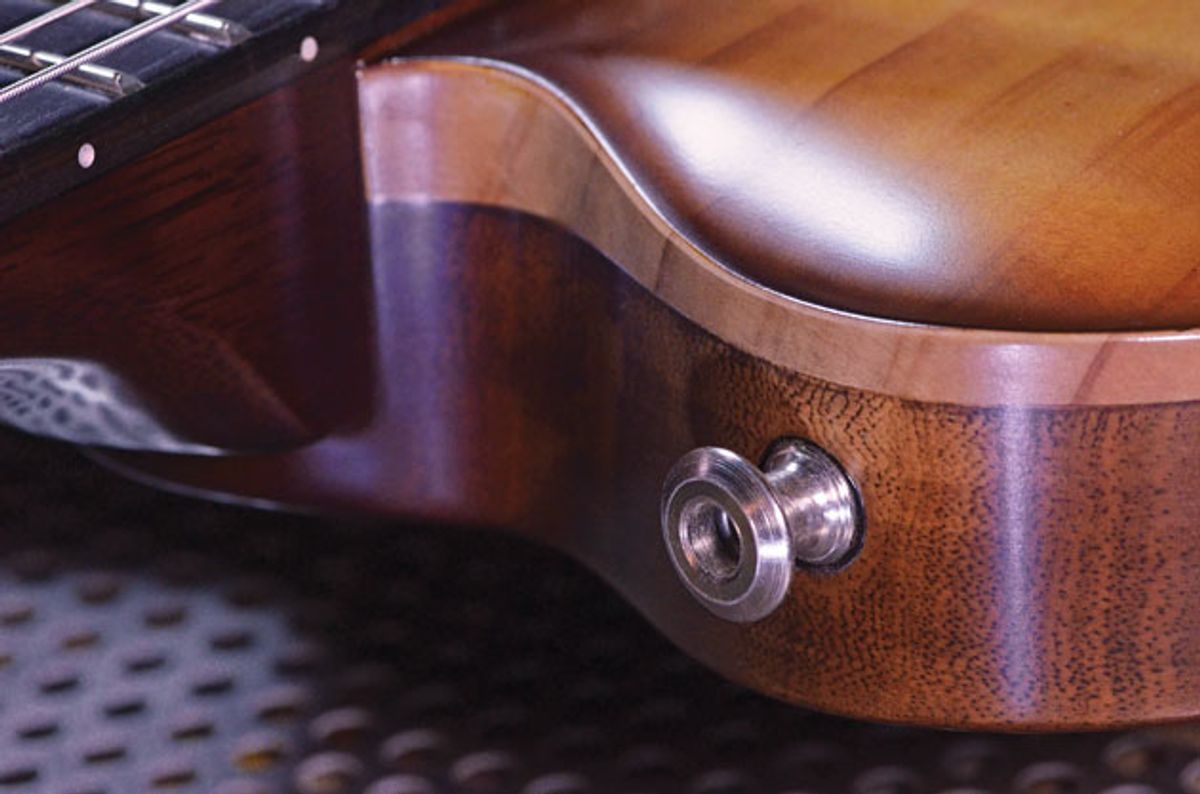
Tone and playability rule, but there’s more to consider when checking out a guitar.
There are plenty of ways to judge a guitar. Beyond the important and obvious tone and playability factors, there’s an entire world of other considerations that branch off into the distance like the tributaries of the Amazon. Admittedly, I have a different perspective when I’m checking out any instrument I encounter. One part of me is a hopeless fanboy who loves to just spank the plank, and the other is the more cynical product of four decades in guitar manufacturing.
First I look at the ’burst. I’ve been chasing the grail of vintage guitars since the early 1970s, so you may be surprised to learn that I don’t usually fall for a fancy-schmancy, figured-maple top. Not every design lends itself to the transverse nature of flame maple. When the shape and flow of the body is at odds with the lines of figure, I feel a tension that needs to be resolved.
The application of the finish can visually make or break any guitar, and this is where the artistry of an accomplished painter comes into play. I look for a sunburst that moves your eyes along the body shape and compliments the figure in the process. A painter can choose to follow the edge of the guitar all the way around to accentuate cutaways and highlight the length of the body. Conversely, a burst with its own signature shape can add drama to a modest top. A bird’s-eye or plain-maple top is a great candidate for a very narrow strip of color at the body’s perimeter. (This is particularly cool when it adds contrast to show off a bound edge.) Not every guitar requires choice figuring to make a statement, and more often than not, I go for an overall balance between the shape and the gingerbread.
None more black. When you encounter a black guitar, you want to see the deepest, flattest, slickest paint job possible. Guitar builders hate black as much as goths love pallor because it’s really hard to do well. Gloss black shows every imperfection, which is why car companies (and guitar builders) leave some orange peel on their products.
To test a painter’s finish, try to read a newspaper or book in the reflection. Is the small print clear? Are lines razor-sharp? A great finish looks like a mirror—not just shiny. If you make guitars, you can hate me for pointing this out, but you know I’m not lying.
When in doubt, simplify. There are tons of great components out there, so it might be tempting for a guitar maker to overindulge. But throwing all the spices into one dish can make a guitar look like an explosion in a parts factory. Instrument designers with an eye for detail want a theme to run through all of the components.
On the other hand, I’ve seen guitars that break this rule by using the dissonance of mismatched parts like a Thelonious Monk chord. You can of course change out hardware if you don’t like it, but it’s worth thinking about the builder’s intent.
Another area where a builder can get it right (or really wrong) is wood choice. The whole subject of tonewoods and sound has been done to death, but there are visual considerations as well. My personal pet peeve is the 1970s hippie approach of laminating half a dozen “exotic” woods together and hoping they will play nice with all that glue. If you’re going to break this simplicity rule, make sure the guitar also has seven or eight impossibly small knobs for onboard EQ and lots of brass hardware. Again, I’m not voicing anything but personal preference here. If this is your idea of a groovy axe, go ahead and dig it, man!
Hide and seek. There are a few places I look to see if the builder really gives a damn, and most of them are hiding in plain sight. Computer-aided routing has improved the fit around inlays, but there’s always a manufacturing margin built in to allow for inconsistencies like wood movement. Truly close tolerances take time and don’t need much filler. You can see what fill there is by reflecting a task light on the fretboard.
Next, take a gander at the tip of the headstock. Guitar companies know that nobody looks there. Why waste time buffing someplace no one will see? I also always look at the end of the fretboard on electrics. Did it get polished at all? The inside edges of unbound f-holes sometimes get the black magic-marker treatment. (Now that’s classy.) There’s a way to buff those edges, but it’s not cost-effective in mass production, and people rarely stick their fingers in there to check. Go ahead—you know you want to now. And as long as you’re getting all touchy-feely, examine the edges of the pickguard for machine marks and burrs as well.
Under the hood. Pop off that control-cavity cover and take a look where the sun doesn’t shine. Is it filthy with polishing compound residue? The best makers take pride in surprising you with a clean and tidy interior. A smooth coat of shielding paint and neatly routed wiring complete with shiny solder joints are nice touches. If you want to be really cruel, apply the same surveillance techniques under the truss-rod cover.
Why it Matters
Most of this stuff won’t make you sound any better. (That’s what practice is for.) But if you’re going to pay a premium for a great guitar, you deserve a level of care that measures up to the performance. While it is absolutely possible for a crudely made guitar to kick ass, there is allure in something that’s done well in all aspects. I’m a big fan of simple guitars, but I am also an artist who appreciates details. I don’t see any reason to discriminate.
